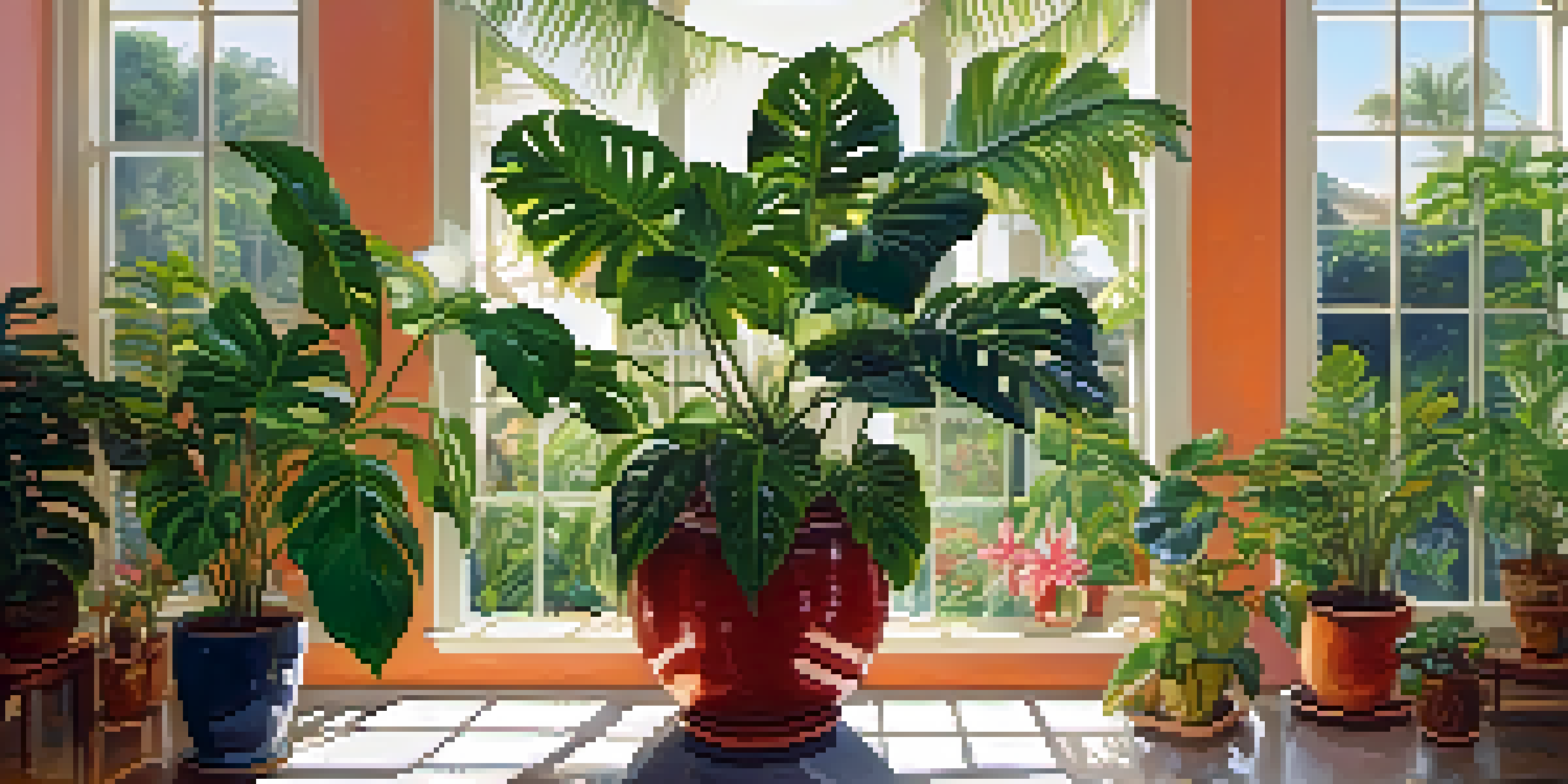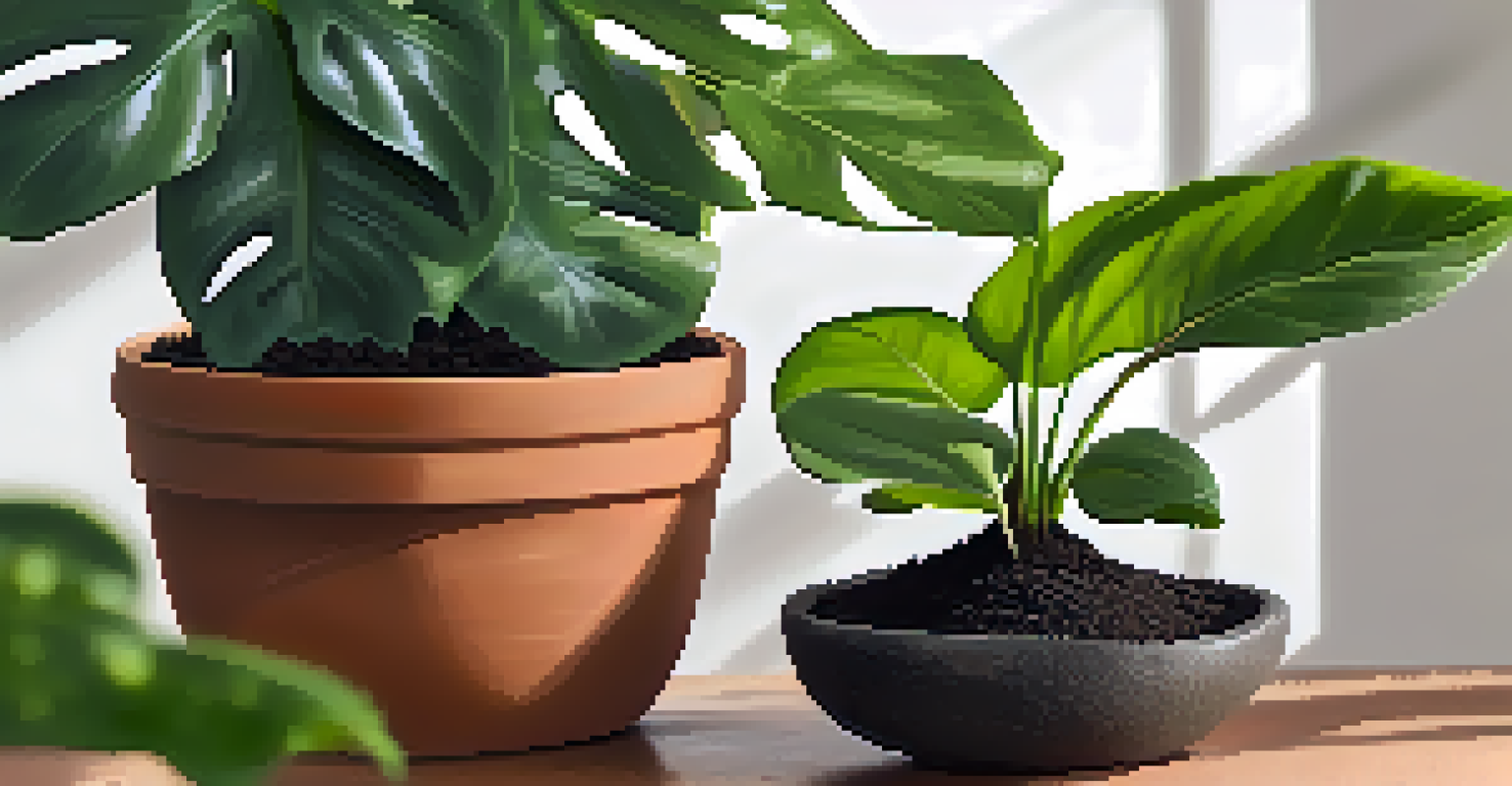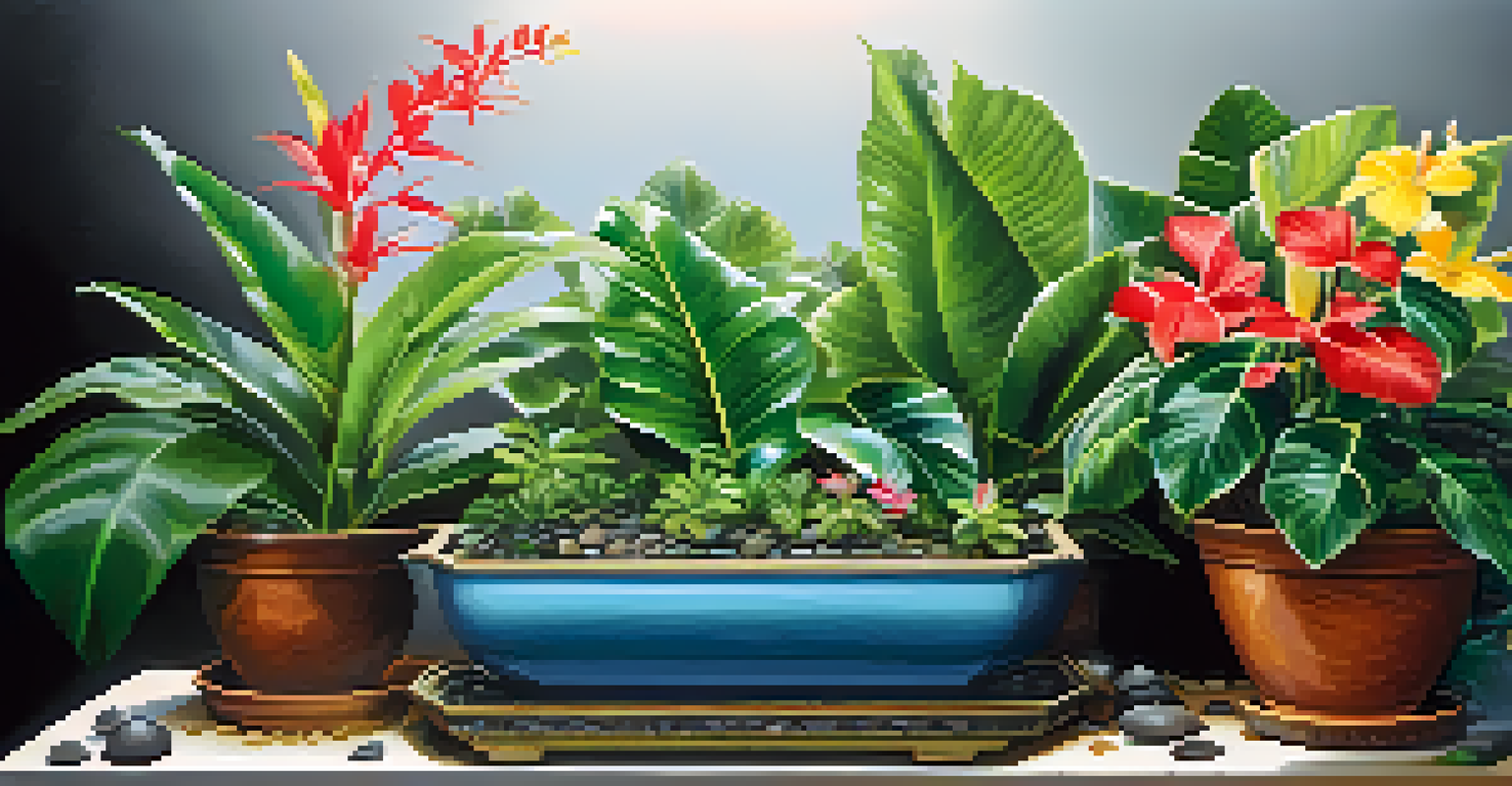Caring for Your Tropical Plants: Essential Tips and Tricks

Understanding the Unique Needs of Tropical Plants
Tropical plants are known for their lush foliage and vibrant colors, but they come with specific care requirements. Unlike their temperate counterparts, they thrive in warm, humid environments, often resembling their natural habitats. Understanding these needs is the first step toward creating a nurturing environment that mimics their tropical origins.
Plants are like people; they thrive on attention and care.
For instance, plants like hibiscus and monstera flourish when provided with consistent warmth, ideally between 65°F to 85°F. This temperature range prevents them from experiencing stress that can stunt growth or cause damage. Additionally, considering their natural humidity levels is crucial, as these plants love moist air which can be achieved through misting or using a humidifier.
By recognizing the unique characteristics of tropical plants, you can tailor your care routine to meet their needs effectively. This not only promotes healthier growth but also enhances the overall beauty of your indoor garden.
Choosing the Right Soil for Your Tropical Plants
Selecting the appropriate soil is vital for the well-being of your tropical plants. They prefer well-draining, nutrient-rich soil that retains moisture while preventing waterlogging. A good potting mix designed for tropical plants usually includes components like peat moss, perlite, and compost to create the ideal texture and nutrient balance.

For example, if you’re potting a Philodendron, a mix that allows for aeration and drainage will help prevent root rot, a common issue in overly wet conditions. It’s also beneficial to consider the pH level; most tropical plants thrive in slightly acidic to neutral soil, around 6.0 to 7.0.
Tropical Plants Need Humidity
Maintaining humidity levels between 50% to 70% is essential for the health and growth of tropical plants.
Using the right soil not only supports healthy root development but also allows your plants to absorb essential nutrients effectively. This ensures that your tropical plants remain vibrant and thriving.
Watering Techniques for Tropical Plants
Watering is one of the most critical aspects of caring for tropical plants, and it requires a balanced approach. These plants generally prefer their soil to be consistently moist but not soggy. A good rule of thumb is to check the top inch of soil; if it feels dry, it’s time to water.
The greatest gift of the garden is the restoration of the five senses.
However, factors like the plant's size, pot type, and environmental conditions can affect how often you need to water. For instance, a larger plant in a terracotta pot may require more frequent watering than a smaller one in plastic. Always ensure your pots have drainage holes to avoid water accumulation, which can lead to root rot.
In addition, consider the water quality you’re using. Allowing tap water to sit for 24 hours can help dissipate chlorine, making it safer for your tropical plants. Adapting your watering techniques can significantly impact their overall health and growth.
Light Requirements for Thriving Tropical Plants
Light is another essential element for the health of tropical plants. Most prefer bright, indirect sunlight, as direct exposure can scorch their leaves. An east-facing window is often ideal, providing gentle morning light without the harshness of midday sun.
For example, a peace lily will thrive in bright, filtered light but may also adapt to lower light conditions, although its flowering may decrease. Conversely, plants like snake plants can tolerate lower light levels, making them versatile for various spaces.
Right Soil Supports Growth
Choosing well-draining, nutrient-rich soil is vital for the well-being of tropical plants, preventing issues like root rot.
Observing your plants for signs of too much or too little light will help you make necessary adjustments. Yellowing leaves may indicate too much sun, while leggy growth could signal they need more light. Finding the right balance ensures your tropical plants remain vibrant and lush.
Humidity Levels: Creating a Tropical Environment at Home
Maintaining high humidity is crucial for tropical plants, as they naturally thrive in humid conditions. Ideally, you want humidity levels to be between 50% to 70% for optimal growth. If you live in a dry climate or during winter months, you might need to take extra steps to boost humidity levels around your plants.
One effective method is to group your tropical plants together. This creates a microenvironment where humidity can be shared between them. Alternatively, placing a tray filled with water and pebbles beneath your pots can also help elevate the humidity as the water evaporates.
Using a humidifier is another great option, especially for larger collections of tropical plants. By ensuring adequate humidity, you’ll not only help your plants thrive but also reduce the risk of pests and diseases associated with dry air.
Fertilizing Your Tropical Plants for Optimal Growth
Fertilization is key to supporting the growth and health of your tropical plants. These plants benefit from regular feeding, particularly during the growing season, which typically runs from spring through summer. A balanced liquid fertilizer diluted to half strength is often a suitable choice, ensuring that nutrients are readily available without overwhelming the plants.
For instance, using a fertilizer high in nitrogen can encourage lush foliage, while one rich in phosphorus can enhance flowering. It’s essential to follow the manufacturer's instructions and not over-fertilize, as this can lead to salt build-up in the soil, damaging the roots.
Regular Watering Is Crucial
Watering techniques should ensure the soil remains consistently moist, avoiding overwatering to protect the roots.
In addition to chemical fertilizers, consider using organic options like compost or worm castings. These not only provide nutrients but also improve soil structure and moisture retention, contributing to a healthier growing environment for your tropical plants.
Common Pests and How to Manage Them
Tropical plants can be susceptible to various pests, including spider mites, aphids, and mealybugs. Regularly inspecting your plants can help you catch any infestations early, which is crucial for effective management. Look for signs like webbing, sticky residue, or visible insects on the leaves.
Once you identify a pest problem, there are various methods to tackle it. For minor infestations, a gentle spray of water can dislodge pests, while neem oil or insecticidal soap can effectively eliminate them without harming the plant. Be sure to follow the instructions carefully to avoid any adverse effects.

Additionally, promoting a healthy environment through proper care can naturally deter pests. Strong, well-cared-for plants are less likely to succumb to infestations, so maintaining their overall health is your best defense against these unwanted visitors.